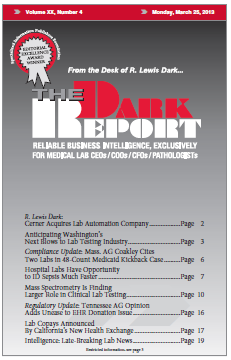CEO SUMMARY: Mass spectrometry is a diagnostic technology that is transforming clinical labs and improving care at a rapid pace. The current generation of instruments is capable of supporting a faster time-to-answer and provides improved accuracy and specificity over many existing methods. For certain clinical assays, mass spec also can cost less per test than …
Mass Spectrometry Is Finding Larger Role in Clinical Labs Read More »
To access this post, you must purchase The Dark Report.


